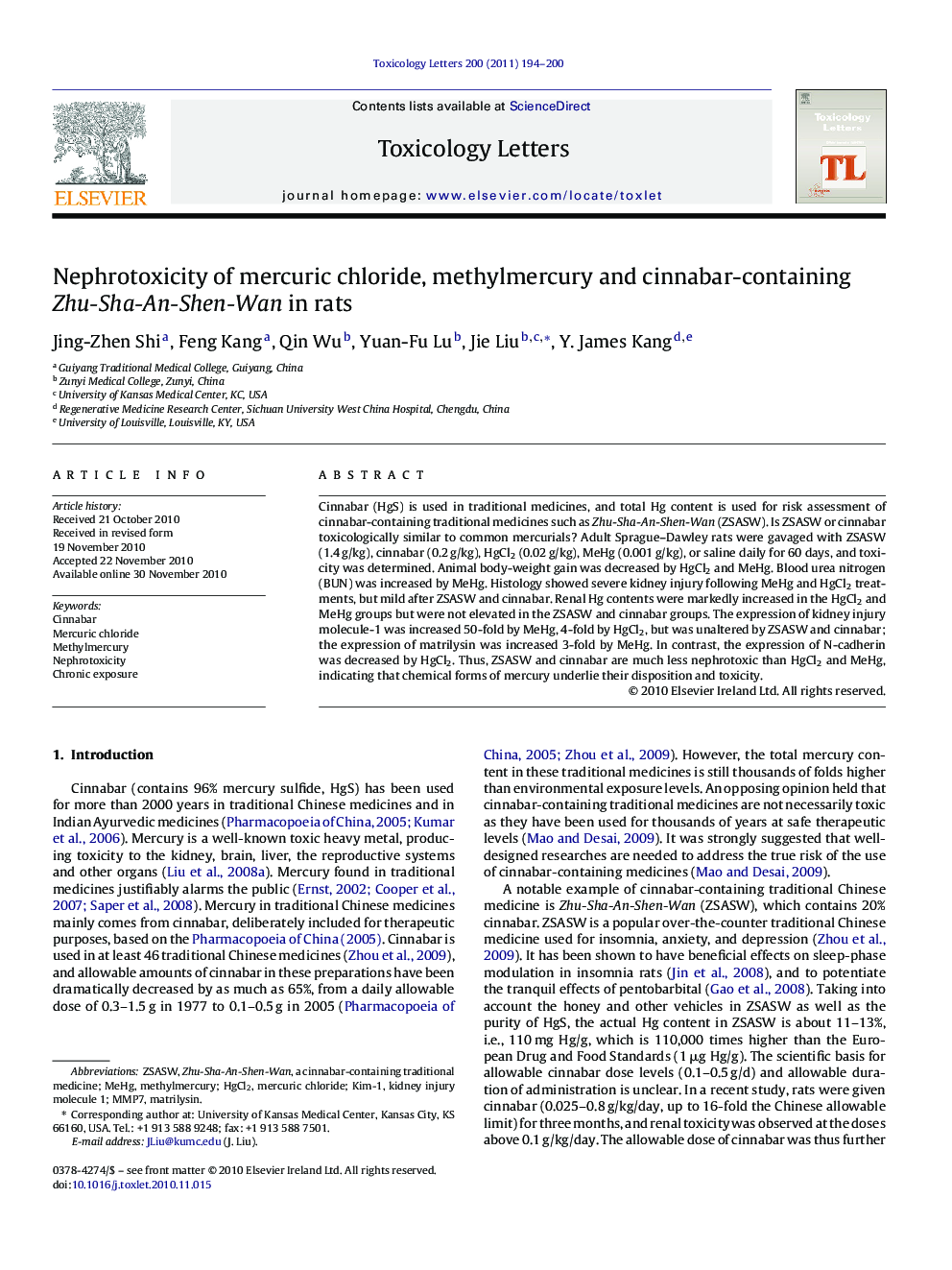| Article ID | Journal | Published Year | Pages | File Type |
|---|---|---|---|---|
| 2600393 | Toxicology Letters | 2011 | 7 Pages |
Cinnabar (HgS) is used in traditional medicines, and total Hg content is used for risk assessment of cinnabar-containing traditional medicines such as Zhu-Sha-An-Shen-Wan (ZSASW). Is ZSASW or cinnabar toxicologically similar to common mercurials? Adult Sprague–Dawley rats were gavaged with ZSASW (1.4 g/kg), cinnabar (0.2 g/kg), HgCl2 (0.02 g/kg), MeHg (0.001 g/kg), or saline daily for 60 days, and toxicity was determined. Animal body-weight gain was decreased by HgCl2 and MeHg. Blood urea nitrogen (BUN) was increased by MeHg. Histology showed severe kidney injury following MeHg and HgCl2 treatments, but mild after ZSASW and cinnabar. Renal Hg contents were markedly increased in the HgCl2 and MeHg groups but were not elevated in the ZSASW and cinnabar groups. The expression of kidney injury molecule-1 was increased 50-fold by MeHg, 4-fold by HgCl2, but was unaltered by ZSASW and cinnabar; the expression of matrilysin was increased 3-fold by MeHg. In contrast, the expression of N-cadherin was decreased by HgCl2. Thus, ZSASW and cinnabar are much less nephrotoxic than HgCl2 and MeHg, indicating that chemical forms of mercury underlie their disposition and toxicity.
